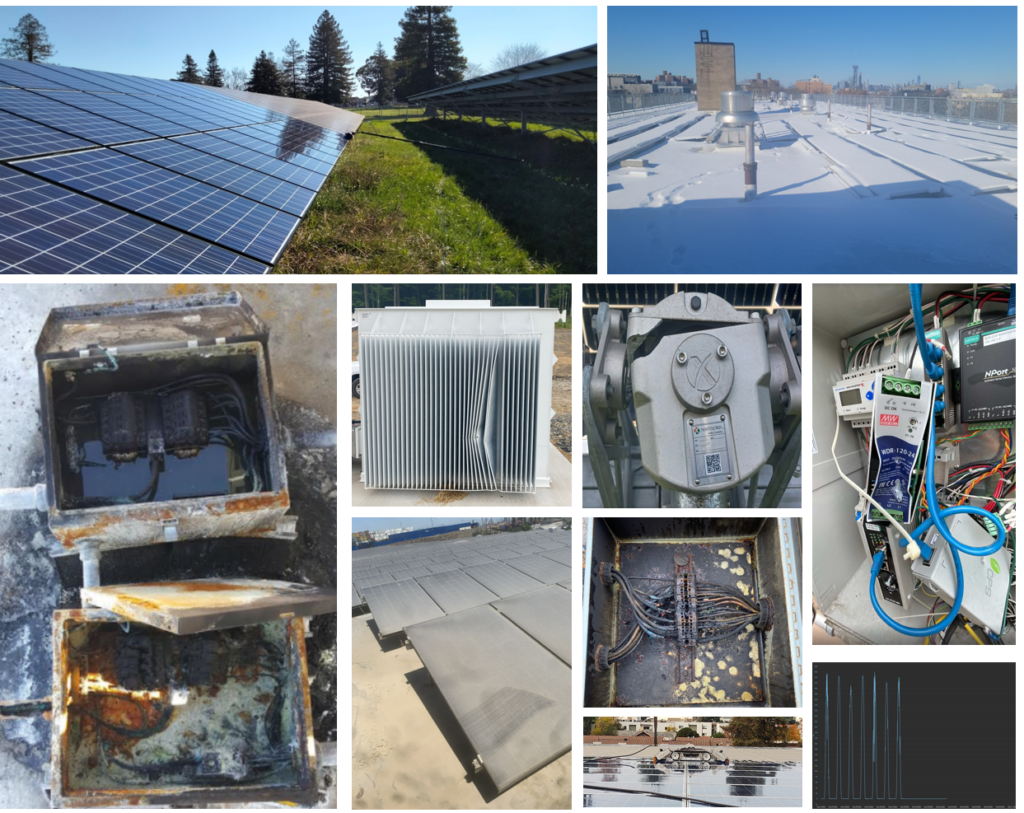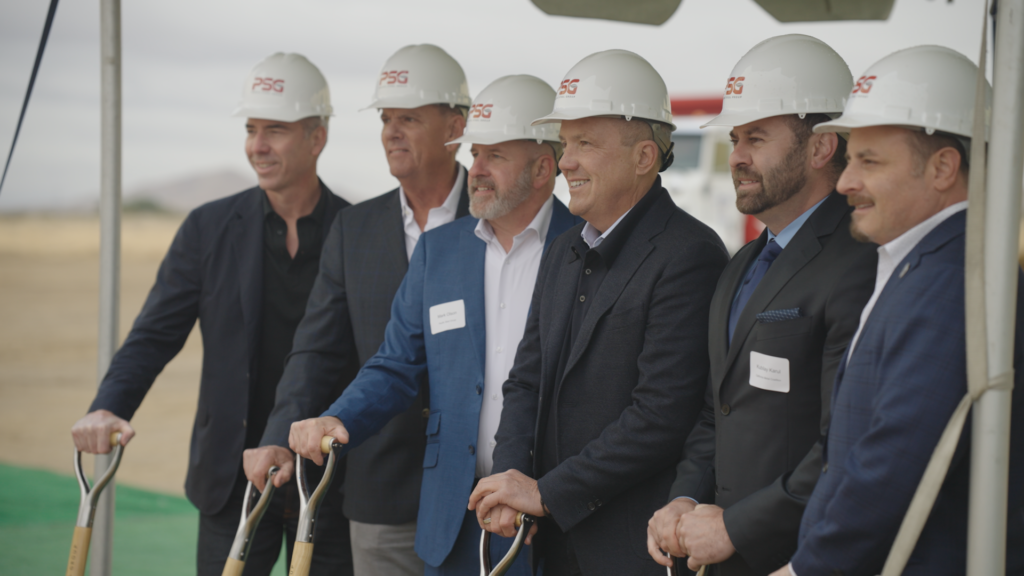DOWNLOAD
Submit the form below to continue your download
SUCCESS
Your download will begin shortly, if it does not start automatically, click the button below to download now.
DownloadBIO
Nam Nguyen is Chief Operating Officer at Generate Capital, responsible for the company’s assets and portfolio and operations. Prior to joining Generate, Nam was Executive Vice President at SunPower, one of the largest solar companies in the world.
Nam was responsible for SunPower’s Commercial Solar division, delivering approximately $500 million in revenues and number 1 market share in the U.S. Prior to that, Nam served as Senior Vice President and oversaw SunPower’s power plant business in Latin America, where she was responsible for the P&L, driving approximately 1GW of contracted pipeline and $1.5 billion in revenues. Prior to SunPower, Nam was Vice President of Global Business Development at First Solar. At First Solar, she led the sale and financing of the First Solar project pipeline, including raising $8 billion of financing, and various M&A activities. She also led the expansion of First Solar’s global platform and pipeline. Prior to First Solar, Nam was responsible for corporate development and strategy at a solar start-up OptiSolar, where she helped raise $300 million in venture funding and eventually led the sale of OptiSolar to First Solar. She has also held various roles in investment banking working in New York, Singapore and Los Angeles and is on Generac’s Board of Directors. Nam has a BA in Economics from Columbia University and an MBA from Harvard University and was a Fulbright Scholar.
What investment committees often miss: Investing with an operator's mindset
Too often, decisions about investing in infrastructure solutions center on spreadsheets that capture only economics and costs. Spreadsheets can do a lot to help investors make decisions, but they cannot evaluate the people and processes that are key to operating physical infrastructure. Those factors often are the difference between success and failure.
Expert View By Nam Tran Nguyen
BIO
Nam Nguyen is Chief Operating Officer at Generate Capital, responsible for the company’s assets and portfolio and operations. Prior to joining Generate, Nam was Executive Vice President at SunPower, one of the largest solar companies in the world.
Nam was responsible for SunPower’s Commercial Solar division, delivering approximately $500 million in revenues and number 1 market share in the U.S. Prior to that, Nam served as Senior Vice President and oversaw SunPower’s power plant business in Latin America, where she was responsible for the P&L, driving approximately 1GW of contracted pipeline and $1.5 billion in revenues. Prior to SunPower, Nam was Vice President of Global Business Development at First Solar. At First Solar, she led the sale and financing of the First Solar project pipeline, including raising $8 billion of financing, and various M&A activities. She also led the expansion of First Solar’s global platform and pipeline. Prior to First Solar, Nam was responsible for corporate development and strategy at a solar start-up OptiSolar, where she helped raise $300 million in venture funding and eventually led the sale of OptiSolar to First Solar. She has also held various roles in investment banking working in New York, Singapore and Los Angeles and is on Generac’s Board of Directors. Nam has a BA in Economics from Columbia University and an MBA from Harvard University and was a Fulbright Scholar.
For investors who are committed to the energy transition, this can be particularly challenging. From installing renewables to introducing electric vehicle fleets, financing the infrastructure transition requires an operator’s mindset that prioritizes lifecycle thinking and stakeholder integration. It’s about asking the hard questions and solving the hard problems: How will this serve our customers for 15 to 20 years? How do we collaborate with a facilities manager implementing this solution for the first time? How will we manage permitting delays or maintenance issues?
Zooming in on these stakeholders reveals how complicated the challenges are, and how comprehensive an operator’s mindset must be. Imagine you are a facilities manager that is being asked to adopt new technology that requires learning new processes for permitting, installation, operations, and maintenance, as well as working with new vendors. Where do you begin? Now imagine you’re a clerk in a permitting office, or a construction foreman, or a customer. In each case you’re being asked to change something you’ve done for years.
While investors make capital decisions, people run projects. Investors who understand the role each of these stakeholders play are able to foresee key risks that, if undetected, could lead to underperformance, lower returns, and even project failure. To successfully scale climate technologies, we need investors who understand the operator’s mindset needed to develop, build, finance, and operate projects that serve generations.
Economics is a key battle – not the war
Most of the focus on the infrastructure transition from investors, tech companies, and the media centers on the economics of core technologies. This makes sense: Sustainable technologies cannot achieve widespread scale and adoption unless they are cost competitive with the traditional solutions they are trying to unseat or if there are forces – like policy – that force the market to develop. But economics is too often presented as the war, when really, it is a battle.
Dismantling existing structures and implementing big changes is hard – much harder than it appears when only looking at numbers on a screen. Often, something new upends decades or more of accumulated knowledge and experience. The tasks required range from technical to cultural: building a team with the necessary hard and soft skills, understanding which stakeholders to involve, engaging with the community, supporting customer adoption and education, understanding timelines and the things that usually delay them such as permitting and interconnection, and much more.
Most of these things are not reflected in a traditional investment process in ways that allow decision makers to consider them properly and understand the actual risk they may pose to the investment. Yet bungling the execution of any of them could be the difference between a successful project launch and losing money on a failed asset.
Take transitioning fleets of internal combustion engine vehicles to EVs – from last mile delivery vehicles to school buses to public transportation. That change requires the mitigation of the financial and technological risks, as well as cultural change and the development of new technical skillsets in the workforce. Senior decision makers must understand the value proposition and be willing to divert from the known course, and budget managers must navigate the multifaceted public and private incentive structures available to make the capital purchase.
The challenges, however, don’t stop there. Fleet managers must take on an entire new spate of skills and responsibilities: finding new equipment and maintenance providers, installing charging infrastructure and handling utility interconnection, and managing charging schedules efficiently, to name a few
Investors must think beyond the traditional investment committee process
If an investor focuses solely on the spreadsheets and project economics that are the focus of many an investment committee, they will be caught unprepared by these types of complications that crop up in the field. Similarly, if investors only focus on technology risk, they will miss core operational and personnel risks that come with change management and executing projects. Investors must recognize that a project’s full lifecycle plays out before and after an investment decision – from predevelopment activity like siting and permitting, to development and construction, to operation. Each of these components needs to be managed by experienced project builders and operators.
For example, Generate’s investment strategy for community solar projects has evolved alongside our operating strategy. Over the years, we have built an in-house technical solar team which gives us ownership and control over the real-time data and decision making we previously outsourced to an O&M provider. This oversight helps us operate our solar assets more effectively: we can better anticipate issues and make quick and informed decisions around what’s working and what’s not for our assets. Life as a solar asset involves washing, mowing, plowing; snow; things breaking; vandalism; and ongoing site improvements as shown by the photos below. We understand these issues, we plan for these occurrences, and we fix them quickly without harming returns.

The life of a solar asset: Real-time decision making is key
It has also made us better solar investors. Our deal team incorporates lessons our technical team learns from the field into our deal designs and underwriting. Investment firms without operating teams may receive such feedback from consultants eventually, but it’s often dated upon receipt. Real-time feedback makes a big difference in this business. For example, we were able to secure solar modules for all the assets in our pipeline shortly after observing the risks of tariffs had increased, and before there was a run on the module market.
We apply this lens across our portfolio of investments, which spans energy transition sectors. Our operator’s mindset helped shape how we structured our recent deal to help finance a low-carbon, standard-setting steel mill for Pacific Steel Group (PSG) (link). The mill will use onsite renewables to reduce the typical carbon intensity of using steel rebar in California by 85%, with plans to install carbon capture and storage to further reduce emissions.

Generate’s ability to anticipate project intricacies, such as the permitting processes required for these onsite technologies, allowed us to bring a level of technical expertise to the deal most traditional financing partners couldn’t. It’s not just valuable for our underwriting process, it’s a value to our partners. We are able to help PSG assess how these components of a complicated project can add value, or risk, to producing steel in Southern California.
Earlier this year, Generate CEO Scott Jacobs wrote about the tactics energy transition leaders must take to be effective in today’s more restrictive economic environment (link). To keep up the pace needed for the energy transition, we must be strategic and disciplined with our investment decisions. As we work to scale the markets for core climate technologies, we must not overlook the culture change and technical intricacies that come with building and managing these projects successfully. We must invest with an operator’s mindset.
More insights
Industrial Decarbonization: How Thermal Storage Can Electrify Heat at Scale
Investment in thermal energy storage has accelerated in recent years as technical progress and customer demand have improved project bankability. Since 2020, sector funding has grown and shifted toward later-stage investors, reflecting greater confidence in TES’s readiness for commercial deployment.
Read moreConsolidation: The Pathway to Enduring Impact
It is easy to be disoriented by the swing from exuberance to pessimism that has defined the clean energy sector in recent years. Yet these moments are precisely when opportunity is greatest. Beneath the headlines are clear indicators of tremendous potential in the U.S. energy transition. The challenge is to separate fundamentals from sentiment, to acknowledge and fix the mistakes that we have made, and to chart a path to scale rooted in discipline, operational excellence, and commercial reality.
Read moreMeeting load growth with clean, flexible power
In the wake of the One Big Beautiful Bill, load growth remains a clear and steady tailwind for renewable energy. Renewables remain the cheapest source of power and the quickest to install, ensuring a bright outlook for the industry despite the shortened available window for some tax incentives. Over the last twenty years, annual investment in renewable energy in the U.S. increased from $5 billion to $100 billion (BloombergNEF, 1H 2025 Renewable Energy Investment Tracker). Compelling economics and flexible demand has the potential to unlock even greater investment in the sector: powering new load with electricity that would otherwise be wasted boosts project economics, ensures quick access to power, and delivers system-wide benefits.
Read more
